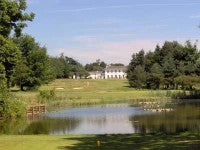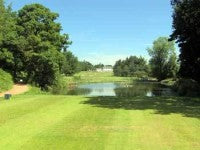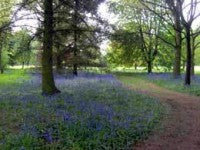Conservation on the Golf Course
Conservation on the Golf Course
By Phil Sharples

There are over 2000 golf courses in Britain, many of them in prime positions with regard to landscape, amenity and wildlife value.
The total area occupied by golf courses accounts for roughly over 4 times the total area of country parks.
Golf courses represent an important sanctuary for wildlife at a time when many of our native animal and plant species are under pressure in both urban and rural environments.
Types of Course
Links
Sand dunes, rough uneven common ground, open to the elements. Most have low lying damp grassland known as 'dune slacks'. This type of course arose out of natural landscapes.
Heathland
Inland equivalents to the sandy common land of the links course. Many of the first clubs formed during the 17th and 18th Centuries were associated with links and heathland landscapes.
Parkland

Parkland courses differ as they are constructed out of fertile, sheltered landscapes surrounded by groups of mature trees and/or woodland.
These were designed with the flair and sense of theatre incorporating lakes. Attempts were made to recreate the links environment by incorporating turf rich in fescues and duneland plants such as sea buckthorn, sea milkwort, plantain and marram grasses.
Golf has continued to develop throughout the last century with purpose built courses being designed and constructed. The post war boom in machinery and chemical manufacture has also altered golf, though some would say not for the better!
Anatomy of a golf course
The golf course environment consists of a variety of components each subject to different intensities of management. Individual parts of the course have their own possibilities and limitations with regard to wildlife value.
Even the most intensively managed areas have their value, if only in the form of an open area for animals to hunt in and/or observe from.
Tees
Tees are intensively managed being frequently mown. Limited in their value. However, there are exceptions, such as Royal St. George's where they act as a home to the rare clustered clover. Management should aim to create a piece of high quality turf whilst keeping applications of chemicals and water to a minimum.
Encouraging birds will have benefits in helping to reduce damage to tees (and greens) by various pests. Many birds will help keep worms in check and also make a meal from leatherjackets and such like.
Greens
A similar environment exists for greens as for tees, apart from a more intensive management regime is required. Greens are often subject to daily mowing , monthly verti-cutting, regular aeration and feeding. Resulting in an area of ground that holds little use to nature except for that as a gathering place and for observation.
Watch for:
Over use of water and fertiliser
Over use of pesticides
Fairways
Less intensively managed, usually mown on a weekly basis. This is similar to the early grazing that occurred on the links type course, although this time clippings are not removed.
Home to a variety of wild flowers (weeds) that are usually sprayed for with a 'selective' herbicide due to the interference caused to the ball.
Semi-rough
A strip of slightly longer grass between the fairway and the rough which acts as a buffer zone between the playing area and the wilder side of the course. The semi-rough is often overlooked and destroyed while widening fairways.
The minimal cutting intensity, the higher height of cut, lack of nutrient and water input allows speedwells, bird-foot trefoil, primroses and other attractive herbs to grow amongst the grass. Even more can be encouraged by removing the clippings.
Bunkers
At first sight these may appear to be a poor area for wildlife but are used by a wide range of animals including; foxes, badgers and hedgehogs. The sand is quick to warm and up and can provide reptiles such as slow worms, adders, grass snakes and lizards a place to bask and soak up the sun. In a way bunkers are of considerable conservation value.
Rough
The rough is the most valuable area for conservation on the golf course as it is relatively undisturbed and left in a fairly natural state. The management will be determined by its particular locality. Coastal compared to parkland for example.
At a time where there are few areas which are free of noise, human interference and other disturbances, golf's richest natural resource exists within the rough, that with the correct management, can act as a sanctuary for some of Britains rarest plants and animals.
 A quick guide on how to encourage wildlife on golf courses
A quick guide on how to encourage wildlife on golf courses
Motorway and railway embankments are a wildlife highway, good for plants with wind dispersed seeds. Basking site for reptiles and small mammals. Hunting site for kestrels and owls.
Copses of trees, even small clumps create ideal conditions for fox earths.
Sheds and barns are important nesting and roosting sites for bats, owls and small birds.
Single mature trees provide nesting sites for kestrels. Often have holes for bats, owls, tits etc.
Heath land provides essential habitat for reptiles and butterflies.
Ponds are important breeding site for frogs, toads, newts, dragonflies and damselflies.
Lakes, reservoirs provide a sanctuary for wild fowl

Hedges provide another form of wildlife corridor providing, food, cover and habitat for many birds and mammals
Woodland is a major wildlife habitat. Some have badger sets. Paths create glades which have their own flora and fauna.
Long grass areas and associated wildflowers support vast numbers of butterflies, moths and other insects. Small mammals and reptiles shelter here.
Short grass regimes enable opportunities for animals to feed on worms and insects found living in the turf profile.
